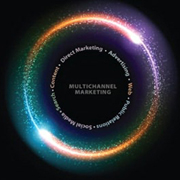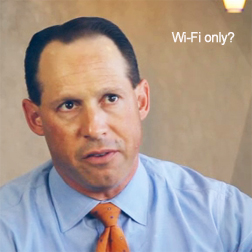It doesn't happen often, but sometimes it does. A public relations firm starts filling the inbox with random pitches, pictures, and press releases. It's not so bad because some of them are close to what you publish. It's not so bad until they start sending the follow-up emails. So you delete some, unread.
Then you delete a few more. And then you delete a few more. It's nothing personal, but you have 20-some emails you do want to read and that deserve a response — public relations professionals who have taken the time to get to know what you publish. But the sheer volume from one gets in the way.
Sure, you want to look at them. There is always that little part of you that wonders if you are passing up on something that fits. You know other publishers and bloggers on the blind bulk list feel the same way because the view counts on the landing pages always have more than two people. So maybe they don't.
Then one day it happens. You find your finger hovering over the spam button. Something makes you hesitate. You never signed on to be that publisher. You want to give this public relations firm a chance.
So you send an email...
Hey [protected],
We really appreciate all the pitches you send over for consideration and I am sure we will cover some of the artists you represent sooner or later. However, I have to ask. Is there any way we can stay on your pitch list but be taken off your blind follow-up list?
All the best,
Rich
And then they respond...
Follow up is key! I'm just trying to figure out if you're going to post or not! We'd love to work with your blog on syndicating our content, and we can affiliate as well and syndicate yours as well!
I already know how this might have turned out with Jennifer Lawson. I've already covered the bit by Chris Anderson. I even shared a pitch gone bad story before, although it was a bit more tempered.
I did kick around ideas for a follow-up response with a few colleagues. It would have easily made for an interesting if not insensitive post with high marks in entertainment value, especially because I just recently reviewed a band that insisted their public relations firm "fix or pull" an email because I made the mistake of, egad, quoting the front man who later regretted what he said after his band wasn't happy.
There is something to be said about the scorched earth approach, but I didn't start another publication for that reason. No, I think (but could always change my mind) I'll say nothing whatsoever and let those pitches fall into the void. Can you imagine? How many heavily touted pitch lists are sent nowhere with pride?
If you work in public relations, it might make you wonder about tactics too. Lawson and Anderson (and myself on occasion) did you a favor to improve your practice whether you realize it or not. It's much easier, although not as entertaining, to say nothing whatsoever. Follow up is the key, indeed.
Then you delete a few more. And then you delete a few more. It's nothing personal, but you have 20-some emails you do want to read and that deserve a response — public relations professionals who have taken the time to get to know what you publish. But the sheer volume from one gets in the way.
Sure, you want to look at them. There is always that little part of you that wonders if you are passing up on something that fits. You know other publishers and bloggers on the blind bulk list feel the same way because the view counts on the landing pages always have more than two people. So maybe they don't.
Then one day it happens. You find your finger hovering over the spam button. Something makes you hesitate. You never signed on to be that publisher. You want to give this public relations firm a chance.
So you send an email...
Hey [protected],
We really appreciate all the pitches you send over for consideration and I am sure we will cover some of the artists you represent sooner or later. However, I have to ask. Is there any way we can stay on your pitch list but be taken off your blind follow-up list?
All the best,
Rich
And then they respond...
Follow up is key! I'm just trying to figure out if you're going to post or not! We'd love to work with your blog on syndicating our content, and we can affiliate as well and syndicate yours as well!
I already know how this might have turned out with Jennifer Lawson. I've already covered the bit by Chris Anderson. I even shared a pitch gone bad story before, although it was a bit more tempered.
I did kick around ideas for a follow-up response with a few colleagues. It would have easily made for an interesting if not insensitive post with high marks in entertainment value, especially because I just recently reviewed a band that insisted their public relations firm "fix or pull" an email because I made the mistake of, egad, quoting the front man who later regretted what he said after his band wasn't happy.
There is something to be said about the scorched earth approach, but I didn't start another publication for that reason. No, I think (but could always change my mind) I'll say nothing whatsoever and let those pitches fall into the void. Can you imagine? How many heavily touted pitch lists are sent nowhere with pride?
If you work in public relations, it might make you wonder about tactics too. Lawson and Anderson (and myself on occasion) did you a favor to improve your practice whether you realize it or not. It's much easier, although not as entertaining, to say nothing whatsoever. Follow up is the key, indeed.







































